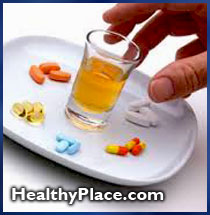
Kava kava is an herbal remedy for treatment of anxiety, insomnia, and related nervous disorders. Learn about the usage, dosage, side-effects of Kava kava.
Botanical Name:Piper methysticum
Common Names:Awa, Kava
Overview
Kava kava (Piper methysticum) has been used as a ceremonial beverage in the Pacific Islands for thousands of years. The roots are chewed or ground into a pulp and added to cold water. The resulting thick brew, which has been compared to the social equivalent of wine in France, is typically offered to guests and dignitaries visiting the Pacific Islands.
In addition to its ceremonial purposes, kava is perhaps best known for its relaxing qualities. Kava is said to elevate mood, well-being, and contentment, and produce a feeling of relaxation. Several studies have found that kava may be useful in the treatment of anxiety, insomnia, and related nervous disorders.
However, new reports linking kava with severe liver damage has prompted regulatory agencies in Europe and Canada to warn consumers of the potential risks associated with this herb and even remove kava-containing products from the market. Based on these and other reports in the United States, the Food and Drug Administration (FDA) issued a consumer advisory in March of 2002 regarding the "rare," but potential risk of liver failure associated with kava-containing products. Be sure to visit the Precautions section for further information about the potential dangers associated with kava.
Due to these potential dangers, kava should be used only under the guidance of a qualified healthcare practitioner. Kava has been extensively studied, however, and evidence suggests that (under proper supervision) it may be helpful for the following health problems:
Kava for Anxiety
In a recent review of seven scientific studies, researchers concluded that kava extract is significantly more effective than placebo in treating anxiety. One study found that kava substantially improved symptoms after only one week of treatment. Results of clinical studies and the experiences of people using kava suggest that this herb may be as effective as certain anti-depressants and anti-anxiety medications. In fact, according to one recent study, kava and diazepam (a medication frequently used for anxiety) cause matching changes in brain wave activity, suggesting that they may work very similarly to calm the mind.
Some experts suggest that kava be considered for use when anxiety and/or stress accompany certain medical illnesses. For example, such feelings are not uncommon when being treated for cancer. In one recent survey, as many as 25% of prostate cancer patients felt depressed or anxious. The authors of this particular survey suggested that kava be considered to help relieve the feelings of such men with prostate cancer.
Kava for Insomnia
Short-term studies suggest that kava is effective for insomnia, particularly in terms of improving sleep quality and decreasing the amount of time needed to fall asleep.
Other
In addition to its anxiety-reducing (anxiolytic) and sedative properties, active compounds in kava are reputed to help prevent seizures and relieve muscle spasms. Although kava has not been studied for these purposes, some professional herbalists may recommend this herb to help relieve these and related health problems.
Plant Description
Kava root (which is used in medicinal preparations) comes from a tall shrub that grows in the islands of the Pacific Ocean. This shrub produces large, green, heart-shaped leaves that grow thickly on the branches. Long, slender flowers grow where the branches meet the stems. The roots look like bundles of woody, hairy branches.
What's It Made Of?
The main active ingredients in kava root are called kava pyrones (or kava lactones). The primary kava pyrones (including kawain and methysticum) have been extensively studied in laboratory and animal studies. These substances have been found to reduce convulsions, promote sleep, and relax muscles in animals. They also have pain-relieving properties, which explains why chewing kava root tends to cause a temporary numbness and tingling sensation on the tongue.
Available Forms
In some parts of the world, whole kava roots are chewed for their medicinal value. Kava is also available in liquid form, as tinctures or extracts, and powdered or crushed in capsules or tablets.
How to Take It
It is important to note that some people have developed severe liver damage, even liver failure, after ingesting kava. See Precautions section for more details. Under no circumstances should this herb be taken without the supervision of a qualified healthcare practitioner.
Pediatric
There are no known scientific reports on the pediatric use of kava. Therefore, it is not currently recommended for children.
Adult
If your health care provider has recommended kava, make sure you read the label to look for kava products that are standardized to contain a 70% kava lactone content.
For the relief of anxiety and insomnia, and to reduce stress, follow your provider's instructions. A commonly recommended kava dose is 2.0 to 4.0 grams as a decoction (a preparation made by boiling down the herb in water) up to three times daily. Another typical dose is 60 to 600 milligrams kava lactones daily of standardized formulas.
Length of treatment varies.
It may take four weeks before you notice improvement. Kava should not be taken for more than three months.
Precautions
The use of herbs is a time-honored approach to strengthening the body and treating disease. Herbs, however, contain active substances that can trigger side effects and interact with other herbs, supplements, or medications. For these reasons, herbs should be taken with care, under the supervision of a practitioner knowledgeable in the field of botanical medicine. This is particularly true for kava, given its potentially serious side effects.
In recent years, several reports in the United States and abroad have linked kava ingestion with severe liver problems. Kava-containing products have been associated with at least 25 reports of liver-related injuries (including hepatitis, cirrhosis, and liver failure). In one case report, a 50-year-old man developed hepatitis after taking three to four kava extracts daily for two months. His condition quickly deteriorated and a liver transplant became necessary.
Liver-related risks associated with the use of kava have prompted regulatory agencies in other countries, including those in Germany, Switzerland, France, Canada, and the United Kingdom, to warn consumers about the potential risks associated with kava use and to remove kava-containing products from the marketplace.
Largely driven by the policies of these other countries as well as reports of adverse effects in the United States, the FDA issued an advisory in March of 2002 regarding the "rare," but potential risk of liver failure associated with kava-containing products. The advisory cautions individuals with liver disease or liver problems as well as those taking products (medications, herbs, or supplements) that affect the liver, to consult a physician before taking kava-containing products. If you have taken kava and are experiencing symptoms of liver damage (such as yellow skin [jaundice], fatigue, abdominal pain, loss of appetite, nausea, vomiting, and joint pain), seek immediate medical attention.
Other side effects associated with kava appear to be mild and infrequent. Some reported adverse effects include allergic skin reactions (such as contact dermatitis), dizziness, drowsiness, restlessness, stomach upset, and tremors. Long term use at high doses may cause flaky, dry, and yellowish discoloration of the skin, hair loss (alopecia), partial loss of hearing, and loss of appetite. Like alcohol, kava may also have intoxicating effects and should not be taken before driving. In addition, when taken together with kava, alcohol increases the risk of toxicity from this herb.
Pregnant or breastfeeding women should not take kava. Those undergoing surgery should also not take this herb as it may interfere with drugs used to induce anesthesia and prolong the effect of anesthesia. Kava should be stopped at least 24 hours prior to the scheduled surgery.
Possible Interactions
If you are currently being treated with any of the following medications, you should not use kava without first talking to your healthcare provider:
Kava and Anticonvulsants
Kava may exaggerate the effects of medications used to treat seizures.
Kava and Central Nervous System (CNS) depressants
Kava may enhance the effects of CNS depressants such as benzodiazepines used for sleep disturbances or anxiety (particularly alprazolam) and barbiturates used for sleep disorders and seizures (such as pentobarbital). In fact, there has been one report of someone going into a coma from the combination of kava and alprazolam.
Kava and Antipsychotic medications
Kava may increase the risk of unpleasant side effects associated with phenothiazine medications (often used for the treatment of schizophrenia), such as chlorpromazine and promethazine.
Kava and Levodopa
There has been at least one report that kava may reduce the effectiveness of levodopa, a medication used to treat Parkinson's disease. Therefore, you should not take this herb if you are taking any medications containing levodopa.
back to: Herbal Treatments Homepage
Supporting Research
Almeida JC, Grimsley EW. Coma from the health food store: interaction between kava and alprazolam. Ann Intern Med. 1996;125:940-941.
Ang-Lee M, Moss J, Yuan C. Herbal medicines and perioperative care. JAMA. 2001;286(2):208-216.
Attele AS, Xie JT, Yuan CS. Treatment of insomnia: an alternative approach. Altern Med Rev. 2000;5(3):249-259.
Beaubrun G, Gray GE. A review of herbal medicines for psychiatric disorders. [review]. Psychiatr Serv. 2000;51(9):1130-1134.
Blumenthal M, Goldberg A, Brinckmann J, eds. Herbal Medicine: Expanded Commission E Monographs. Newton, MA: Integrative Medicine Communications; 2000:221-225.
Brinker F. Herb Contraindications and Drug Interactions. 2nd ed. Sandy, Ore: Eclectic Medical; 1998:88-89.
Cauffield JS, Forbes HJ. Dietary supplements used in the treatment of depression, anxiety, and sleep disorders. [review]. Lippincotts Prim Care Pract. 1999;3(3):290-304.
Cropley M, Cave Z, Ellis J, Middleton RW. Effect of Kava and Valerian on human physiological and psychological responses to mental stress assessed under laboratory conditions. Phytother Res. 2002;16(1):23-27.
Davies LP, Drew CA, Duffield P. Kava pyrones and resin: studies on GABA A, GABA B, and benzodiazepine binding sites in the rodent brain. Pharmacol Toxicol. 1992;71:120-126.
Ernst E. Adverse effects of herbal drugs in dermatology. [Review]. Br J Dermatol. 2000;143(5):923-929.
Ernst E. The risk-benefit profile of commonly used herbal therapies: Ginkgo, St. John's Wort, Ginseng, Echinacea, Saw Palmetto, and Kava. [Review]. Ann Intern Med. 2002;136(1):42-53.
Escher M, Desmeules J, Giostra E, Mentha G. Hepatitis associated with kava, a herbal remedy for anxiety. BMJ. 2001;322:139.
Foster S, Tyler VE. Tyler's Honest Herbal. 4th ed. New York: The Haworth Herbal Press; 1999:229-231.
Fugh-Berman A, Cott JM. Dietary supplements and natural products as psychotherapeutic agents. Psychosom Med. 1999;61(5):712-728.
Gyllenhaal C, Merritt SL, Peterson SD, Block KI, Gochenour T. Efficacy and safety of herbal stimulants and sedatives in sleep disorders. Sleep Med Rev. 2000;4(2):1-24.
Heiligenstein E, Guenther RN. Over-the-counter psychotropics: a review of melatonin, St. John's wort, valerian, and kava kava. J Am Coll Health. 1998;46:271-276.
Jamieson DD, Duffield PH. Positive interactions of ethanol and kava resin in mice. Clin Exp Pharmacol Physiol. 1990;17:509-514.
Larkin M. Surgery patients at risk for herb-anaesthesia interactions. Lancet. 1999;354(9187):1362.
Miller LG. Herbal medicinals: selected clinical considerations focusing on known or potential drug-herb interactions. Arch Intern Med. 1998;158(20):2200-2211.
Moyad MA, Hathaway S, Ni HS. Traditional Chinese medicine, acupuncture, and other alternative medicines for prostate cancer: an introduction and the need for more research. [Review]. Semin Urol Oncol. 1999;17(2):103-110.
Pittler MH, Ernst E. Efficacy of kava extract for treating anxiety: systematic review and meta-analysis. J Clin Psychopharmacol. 2000;20(1):84-89.
Rotblatt M, Ziment I. Evidence-Based Herbal Medicine. Philadelphia, PA: Hanley & Belfus, Inc; 2002:245-248.
Schelosky L, Raffauf C, Jendroska K, et al. Kava and dopamine antagonism. J Neurol Neurosurg Psychiatry. 1995;58(5):639-640.
U.S. Food and Drug Administration. Letter to healthcare professionals: FDA issues consumer advisory that kava products may be associated with severe liver injury. March 25, 2002. Accessed at: http://www.fda.gov/Food/ResourcesForYou/Consumers/ucm085482.htm.
Volz HP, Kieser M. Kava-kava extract WS 1490 versus placebo in anxiety disorders a randomized placebo-controlled 25-week outpatient trial. Pharmacopsychiat. 1997;30:1-5.
Wheatley D. Kava and valerian in the treatment of stress-induced insomnia. PhytotherRes. 2001;15(6):549-551.
Wong AH, Smith M, Boon HS. Herbal remedies in psychiatric practice. Arch Gen Psychiatry. 1998; 55(11):1033-1044.
The publisher does not accept any responsibility for the accuracy of the information or the consequences arising from the application, use, or misuse of any of the information contained herein, including any injury and/or damage to any person or property as a matter of product liability, negligence, or otherwise. No warranty, expressed or implied, is made in regard to the contents of this material. No claims or endorsements are made for any drugs or compounds currently marketed or in investigative use. This material is not intended as a guide to self-medication. The reader is advised to discuss the information provided here with a doctor, pharmacist, nurse, or other authorized healthcare practitioner and to check product information (including package inserts) regarding dosage, precautions, warnings, interactions, and contraindications before administering any drug, herb, or supplement discussed herein.
back to: Herbal Treatments Homepage

 Mood disorders affect not only the lives of the victims themselves, but also the entire social setting in which he/she moves: marriage, family, friends, job, society at large. The root cause of all these impacts is the degraded ability the victim has to "perform" in these different areas of his/her life. Thus a seriously depressed person will become morose, incommunicative, withdrawn, and unable to participate actively in what is going on. He/she will often become a "wet blanket", sapping out whatever joy there might be in any occasion, and most will agree that they don't enjoy having this person around. It, therefore, can become a rather heavy burden upon family and friends to have to compensate, on the one hand, for the loss of the "social'' contribution that would customarily be expected from the victim in the normal family setting, while at the same time making an extra input of care, encouragement, supervision, and listening to him/her. A manic person is the opposite: he/she will be obtrusive, aggressive, argumentative, convinced of his/her infallibility, vain, arrogant, and quick to give orders to others. Such people can be a real pain to be around. In the family setting a manic person is often rocking the boat: causing arguments, being peremptory, making irresponsible expenditures and commitments, and unilaterally breaking agreements.
Mood disorders affect not only the lives of the victims themselves, but also the entire social setting in which he/she moves: marriage, family, friends, job, society at large. The root cause of all these impacts is the degraded ability the victim has to "perform" in these different areas of his/her life. Thus a seriously depressed person will become morose, incommunicative, withdrawn, and unable to participate actively in what is going on. He/she will often become a "wet blanket", sapping out whatever joy there might be in any occasion, and most will agree that they don't enjoy having this person around. It, therefore, can become a rather heavy burden upon family and friends to have to compensate, on the one hand, for the loss of the "social'' contribution that would customarily be expected from the victim in the normal family setting, while at the same time making an extra input of care, encouragement, supervision, and listening to him/her. A manic person is the opposite: he/she will be obtrusive, aggressive, argumentative, convinced of his/her infallibility, vain, arrogant, and quick to give orders to others. Such people can be a real pain to be around. In the family setting a manic person is often rocking the boat: causing arguments, being peremptory, making irresponsible expenditures and commitments, and unilaterally breaking agreements. The value of the gift itself is not as important as its presentation and the thoughtfulness behind the giving. Giving gifts that will benefit the recipient is a meaningful gesture. Good gifts move the recipient because they have been chosen with a thoughtful heart.
The value of the gift itself is not as important as its presentation and the thoughtfulness behind the giving. Giving gifts that will benefit the recipient is a meaningful gesture. Good gifts move the recipient because they have been chosen with a thoughtful heart.
 As a condition of employment, many people have to submit to pre-employment drug screening or random drug testing once they're on the job.
As a condition of employment, many people have to submit to pre-employment drug screening or random drug testing once they're on the job.
 Sometimes people may use alcohol or use drugs to help cover up or mask symptoms of a mood disorder. For example, if a person's mind is racing because of mania, a drink of alcohol may slow it down. If a person has intense sadness or hopelessness because of depression, a drug may help him or her feel happy or hopeful for a period of time. This "self-medication" may appear to help, but it actually makes things worse. After the temporary effects of the alcohol or drugs wear off, a person's symptoms are often worse than ever. Self-medication can cause a person's mood disorder to stay undiagnosed for a long time.
Sometimes people may use alcohol or use drugs to help cover up or mask symptoms of a mood disorder. For example, if a person's mind is racing because of mania, a drink of alcohol may slow it down. If a person has intense sadness or hopelessness because of depression, a drug may help him or her feel happy or hopeful for a period of time. This "self-medication" may appear to help, but it actually makes things worse. After the temporary effects of the alcohol or drugs wear off, a person's symptoms are often worse than ever. Self-medication can cause a person's mood disorder to stay undiagnosed for a long time.